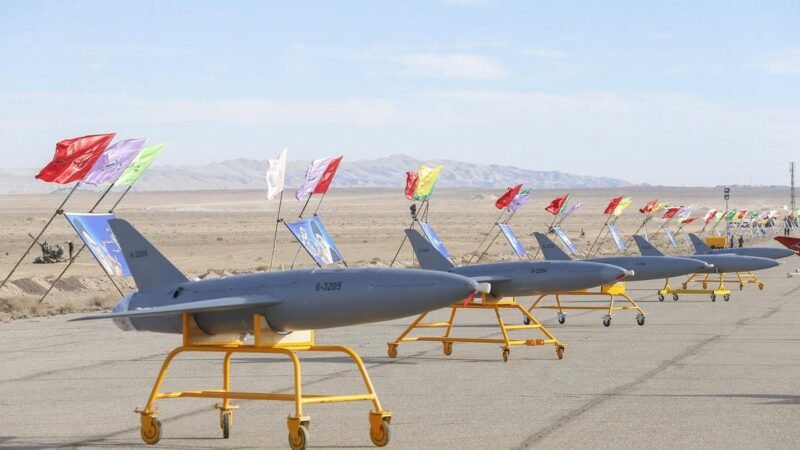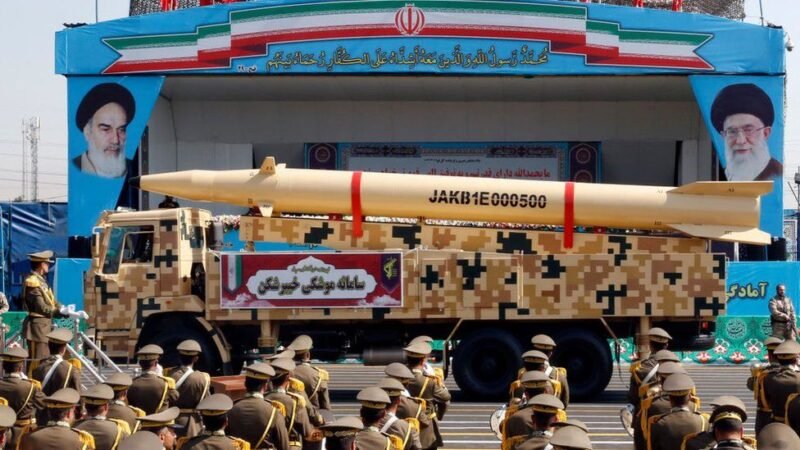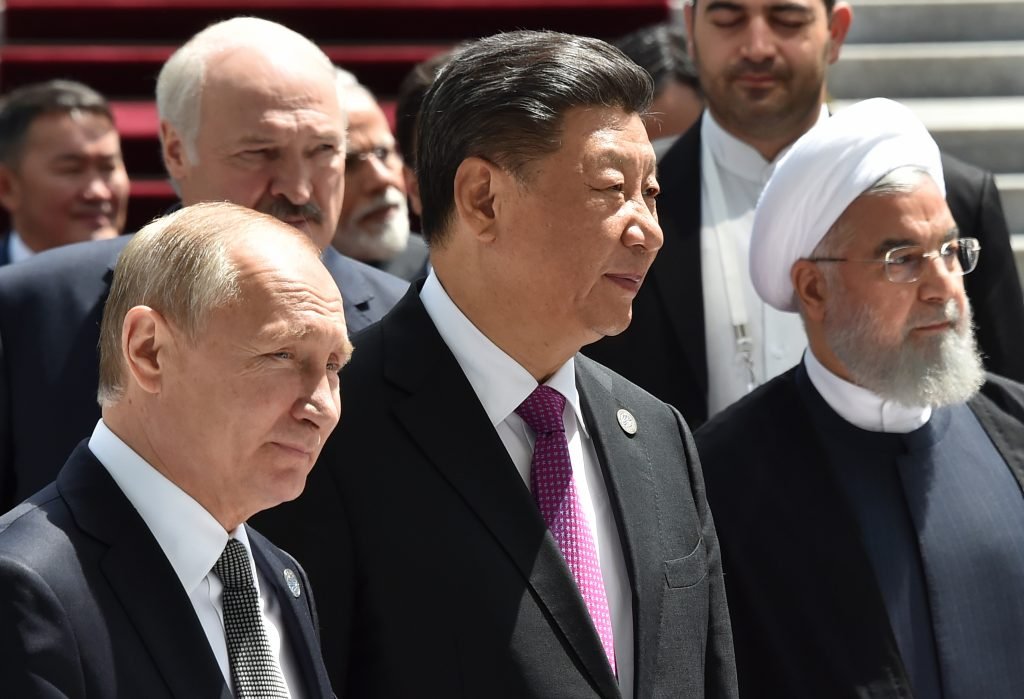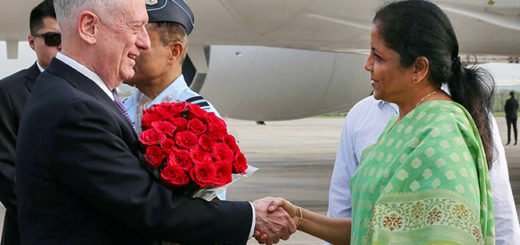Russian Tactics, Iranian Drones and Chinese Knock-Offs: West Faces Its Enemies in Ukraine

In the nine months of the Russo-Ukrainian war, Russia has finally surmounted a credible offensive against Ukraine. For military students and strategists, there have been enough learnings from this war to fill volumes! And unmanned aerial vehicles (UAVs) have singlehandedly been able to shift the centre of power. After Ukraine was able to use drones to fend off Russian tanks, Russian forces are now using Iranian suicide drones to slam into Ukrainian targets. Researchers studying these drones have found Chinese knock-offs of western parts in these Iranian suicide drones.

Russo-Iranian Bonhomie: Powered by China
Ukraine claimed it first noticed that Russia was using Iran-supplied weapons in September. Since then, Russia has successfully used them to target Ukraine’s critical energy infrastructure, resulting in significant power shortages. For the first time recently, Iran acknowledged that it had given drones to Russia but that they were sent before the war broke out.
However, the Ukrainian military intelligence in Kyiv dismantled the captured Iranian drones. And the manufacturing date on its propeller, Mohajer-6, read February this year. As the propeller is just one of the many components needed to make a drone, the date indicates that the drone would have at least been supplied after the invasion began if not made.
Sources also revealed that Russia had plans to buy Iranian ballistic missiles. They also mentioned that Iran supplied 450 drones to Russia and will send 1,000 units of weaponry, including the Fateh-110 and Zolfaghar surface-to-surface missiles, for strikes on Ukrainian troops and cities. These short-range ballistic missiles can strike at 300 and 700 kilometres, respectively.
Ukraine’s Intelligence officials have stated that Iran is considering deploying around 200 combat drones to Russia in early November, including Arash-2 kamikaze drones, Mohajer-6 reconnaissance, and Shahed-136, as well as combat UAVs. The Iranian weapons have been instrumental in Russia’s strategy to disable Ukraine by cutting off its energy supplies while it strives to recover momentum after many defeats.
According to Ukraine’s President, Volodymyr Zelenskyy, Iranian technology has helped damage over 30 per cent of Ukraine’s energy systems since early October. Although Ukraine’s authorities have introduced daily blackouts to stabilise the grid, they predict there could be a total blackout in some regions this winter amid sub-zero temperatures if Russia continues to attack.
According to a new report from the Institute for Science and International Security, these weapons appear to be built using Chinese parts based on western designs. Researchers have pointed out that the Shahed-136 sports an engine manufactured by Beijing MicroPilot Flight Control Systems. However, they contend that it is a copy of a German engine. Further, researchers claim Iran has built its copy of the Chinese engines. The Shahed-131 drone, for instance, uses a reverse-engineered copy of a Chinese engine that copied a British design. This drone, also in Russian employ, is controlled remotely, flies into a target, and blows up.
These small systems are packed with explosives and can fly around like regular drones, but they’re long-range loitering munitions. This means they can hang around an area before being directed at a specific target, which they can fly into and detonate – leading people to refer to them as suicide or kamikaze drones.
Despite evidence from western intelligence agencies, Russia and Iran have denied that Shahed-136 are being used in Ukraine. US officials confirmed last month that Russian officials travelled to Iran to learn how to use the weapons. Iranian military personnel recently travelled to occupied Crimea to help Putin’s troops operate the drones. Russian President Vladimir Putin has used the Shahed-136 to attack and terrorise Ukrainian cities far from the front lines in recent weeks as his military faces setbacks on the battlefield.
Iran has been a significant user and supplier of drones for several years. Primarily driven by sanctions related to importing military drones or aircraft and unable to build large combat jets, Iran became a specialist in combat drones. Back in 2014, a journalist blog noted that Iran is a drone power and has many battle-proven drones. It usually exports its drones to proxies like the Houthis in Yemen and Hezbollah in Lebanon, who use them for attacks in Saudi Arabia and Israel, respectively. It also supplies them commercially to Ecuador, Venezuela, and some friendly African states.
Russia already has plenty of cheap drones; the Orlan-10 (“Eagle”) is a prime example. With a 10-meter wingspan and up to 16 hours of flight time with a piston engine, it locates targets for Russian rockets and directs fire at them. Drone-directed fire strikes within three minutes, whereas other methods take a half-hour. There are multiple Eagle drones ready to attack Ukrainian energy infrastructures.

Enabling Iran: China’s Role
The latest research into Iran’s drone prowess has exposed the more profound Chinese role in enabling Iranian manufacturing and supply. Chinese companies have primarily equipped Iran with knock-off western components despite sanctions to help Iran’s UAV combat drone programme. It also is unclear how China itself procured western designs.
The current consensus hints towards China somehow acquiring western designs, indigenously producing them in China and, for select designs, exporting them further to Iran. However, the extent of Chinese involvement remains to be determined. The western crackdown on Iran is unlikely due to their cluelessness on the specificity of Chinese components in Iranian drones.
For western agencies, it might be helpful to note that Shahed-136 and Mohajer-6 also carry western components that investigators can try to track through customs. Suppose the west is keen to discover Iranian networks. In that case, it must start with their western suppliers, then follow the thread to expose trading companies, distributors, shipping companies, agents friendly to Iran and ultimately, those in Iran organising these purchases.
Even on paper, this seems tedious and unlikely to be concluded before the Russia-Ukraine war.



















